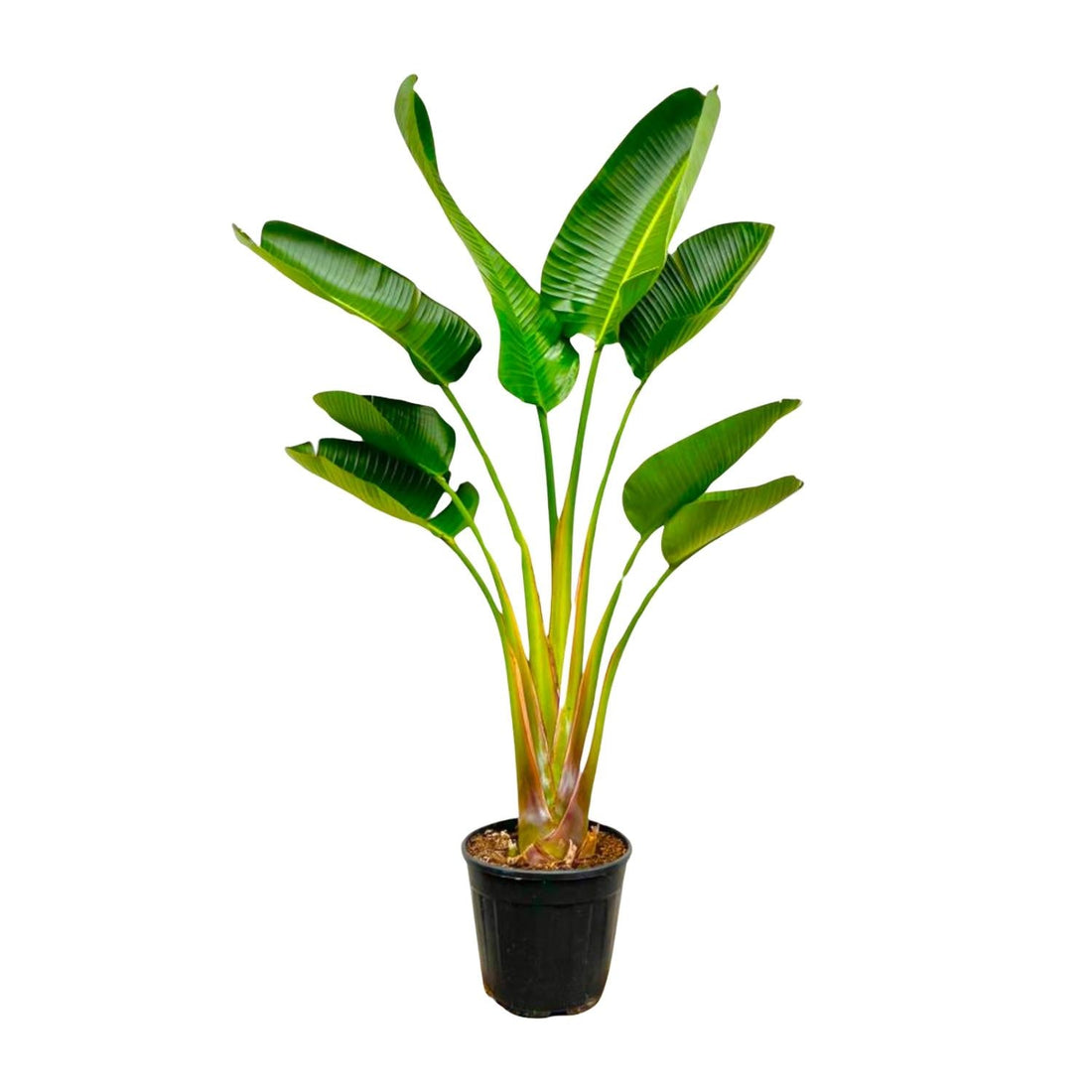Introduction to the Strelitzia Plant
The Strelitzia , often known in Dutch as the bird-of-paradise flower or bird-of-paradise plant, is one of the most exotic and striking houseplants that green lovers can bring into their homes. This plant owes its name not only to its beautiful flowers, which resemble the colorful head of a bird of paradise, but also to its rich history and cultural significance. This comprehensive blog post explores the history of the Strelitzia , its unique characteristics, and care tips.
The History of the Strelitzia
The Strelitzia originates from South Africa and was first scientifically described in 1773 by British botanist Joseph Banks during an expedition to the African continent. The name "Strelitzia" honors Charlotte of Mecklenburg-Strelitz, wife of King George III of the United Kingdom. This makes the Strelitzia a plant with a history dating back to the 18th century and a strong connection to European royal families.
From South Africa, the Strelitzia spread throughout tropical and subtropical regions worldwide. Its impressive flowers and decorative appearance quickly made it popular as a houseplant in Europe and North America. Today, the Strelitzia symbolizes exotic beauty and is prized for its unique appearance and tropical allure.
Types of Strelitzia and Their Characteristics
There are five different species of Strelitzia , the most well known and cultivated of which are the following:
-
Strelitzia Reginae : Also known as the classic bird of paradise, this species is the most common houseplant and can grow up to 2 meters tall. The flowers are orange and blue and resemble the head of a bird of paradise. They usually bloom in winter and early spring.
-
Strelitzia Nicolai : This is the giant white bird of paradise. The plant can grow up to 10 meters tall. The flowers are white and purple and appear in the summer months. This species is often used for large spaces such as conservatories and offices.
-
Other species: Strelitzia Augusta , Caudata and Juncea are less well known and often less suitable for indoors because of their demands on space and climate.
These varieties differ in size, flower colour and growth pattern, so there is always a Strelitzia to suit different living or working environments.
Unique Features of the Strelitzia
The Strelitzia is best known for its large, glossy, deep green leaves that resemble those of banana plants. The leaves have a sturdy structure and are difficult to tear. The flowers are spectacular in shape and color, and the exotic inflorescence makes them a unique eye-catcher in any interior or garden.
This plant has a growth cycle where flowering usually takes several years, especially with the Reginae variety. However, the Nicolai can grow faster and larger, making it ideal for a tropical look in larger spaces.
The Ideal Location for the Strelitzia
The Strelitzia grows best in a bright spot, preferably with plenty of direct sunlight. A south- or west-facing window is ideal. The plant prefers a warm environment and should not be exposed to temperatures below 10 degrees Celsius.
Although Strelitzia loves plenty of light, it should be protected from bright midday sun, which can burn the leaves. Indoors, Strelitzia grows best in a space with ample air circulation and indirect sunlight.
Care Tips for a Healthy Strelitzia
- Watering: Keep the soil moist but not soggy. Too much water can cause root rot, while too little water stunts growth.
- Power supply: During the growing season (spring and summer), use a liquid houseplant fertilizer once a month.
- Spraying: Spray the leaves regularly to remove dust and increase humidity.
- Repotting: Repot the plant every 2-3 years to increase growing space and replace old soil.
Common Problems and Solutions
Some problems that can occur include curling leaves, drying out leaf tips, or brown spots. These are often caused by improper watering, excessively dry air, or insufficient light. If the leaves don't unfold, this could indicate a lack of moisture or nutrients.
Solutions include adjusting the watering, increasing humidity by spraying, and placing the plant in a brighter spot.
Symbolism and Cultural Significance of the Strelitzia
The Strelitzia symbolizes love, freedom, and hospitality. In various cultures, it is seen as a sign of romantic affection and exotic beauty. The flower is often used in art, decoration, and official emblems.
Where to Buy a Strelitzia?
PNiT is an excellent choice for purchasing a Strelitzia . PNiT is a specialized supplier offering high-quality, healthy Strelitzia plants, with expert advice on proper care. Besides PNiT, there are other online and brick-and-mortar stores that sell Strelitzias, but PNiT distinguishes itself through quality and service.
Strelitzia in the Interior
With its imposing size and striking flowers, the Strelitzia can create a tropical ambiance in living rooms, offices, and conservatories. Styling tips include combining it with other large houseplants and accentuating the tropical theme with natural materials and fresh colors.
Conclusion: Why the Strelitzia is a Must-Have Houseplant
The Strelitzia is a plant with a rich history, unique cultural values, and spectacular appearance. With proper care and attention, this plant can add years of beauty and tropical flair to any space. Thanks to suppliers like PNiT, it's now easy to acquire this regal and exotic plant.

